Back around Christmas (2016) I received an Airspy Mini and was immediately impressed with its performance. With a simple homemade Vivaldi antenna I was able to receive, if not decode, Inmarsat Aero signals from inside the house through a solid wall. Not too bad.
After adding a Nooelec L-Band LNA to the mix I was able to easily capture and decode those same signals from the same position indoors. Pretty good if you ask me. I have at least one of most "improved" RTL-SDRs and the performance from them was much less satisfactory. While I could see the signals decoding them was a far more difficult task. Finding the sweet spot indoors and adding LOTS of amplification was a must. It's doable indoors with an RTLSDR, but I wouldn't reccomend it unless you have no other options.
At a hamfest this past year I picked up an old aluminum 33cm 1m point to point dish that had been used in the 33cm ham bands. I recently removed the 900MHz feed and fashioned a feed mount out of some aluminum tube stock and mounted one of my homemade Vivaldi antennas on it. It sat in the yard for about a month while I tried to find time to put it to use.
Finally tonight I made some time to put it on the air. I dragged out my laptop and sdr gear and placed the 1m dish on an old push mower so I could move it about to find the correct heading and elevation. I haven't calibrated the feed depth/focal length of the dish yet, just playing it by ear. I'm certain reception will improve once the feed is optimized.
Below are the results which are pretty good for a first shot. I'm fairly certain I can improve the signal strength when I mount my homebrew L-Band Cantenna on the feed (and make the proper adjustments for optimal focal length), as in a side by side direct feed comparison the cantenna provided better overall performance in this portion of the band.
With this setup L-Band reception using an RTLSDR should be greatly improved over the indoor setup. In the coming days, since the weather is forecast to be in the 50's-60's for a change (middle of winter here), I'll try to get out and snap some screenshots using a HackRF and a few different "improved" RTLSDRs. Namely the Nogles.com / ThumbNet N3SDR, RTL-SDR.com Blog V2 SDR (don't have a version 3), and the Nooelec SMArt sdr.
In closing, using the Airspy Mini, a Nooelec L-Band LNA, and 1m Dish I was able to see satellite feeds I would have never known were there otherwise.The average signal strengh was pretty good with SNR averaging around 20-25dB. This can likely be improved by optimizing the feed position and utilizing a narrowband antenna (cantenna) at the feedpoint. The dish is a massive improvement over a direct feed antennas. For now I'll call this little adventure a success, with room for improvement.
Here are the results, Click each screenshot for a full sized image.
Enjoy!
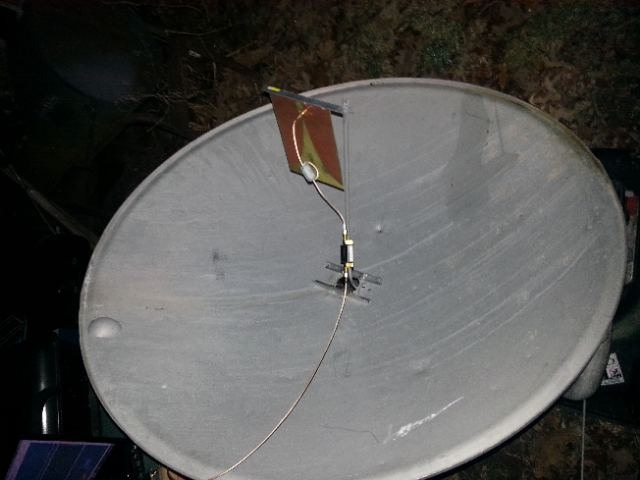
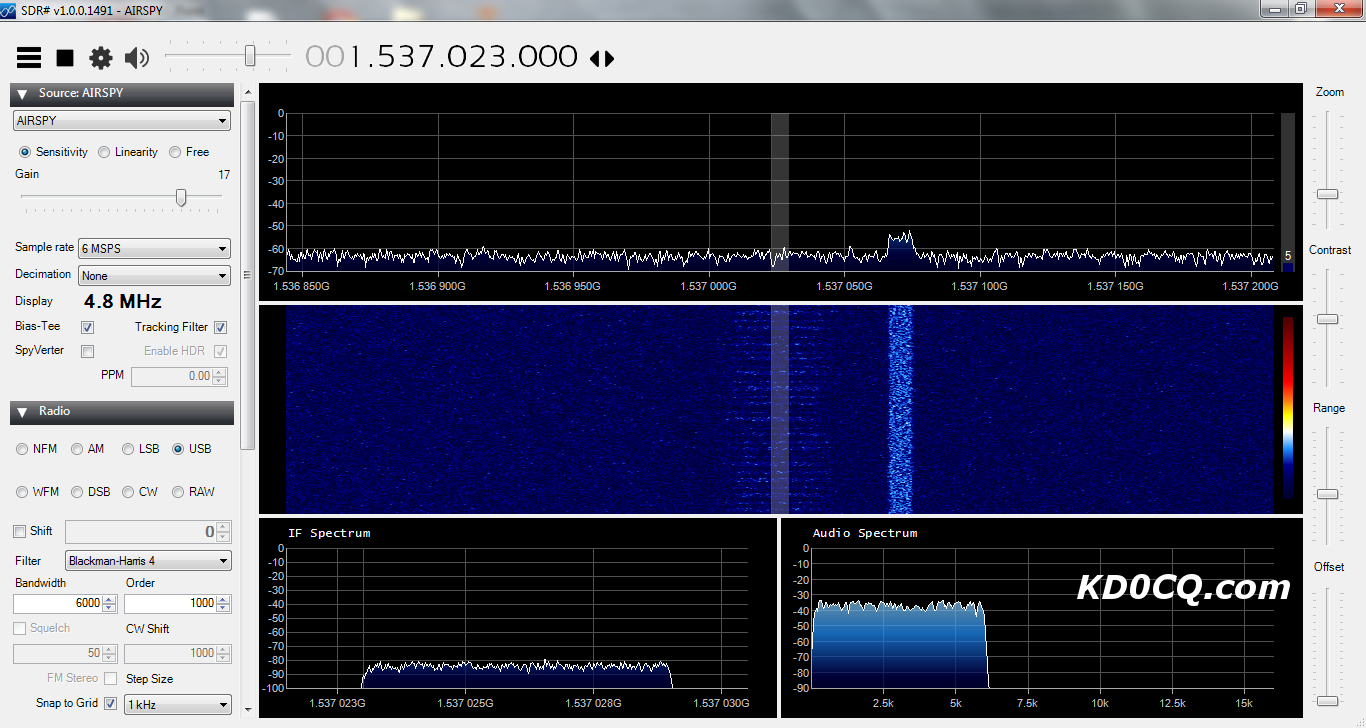
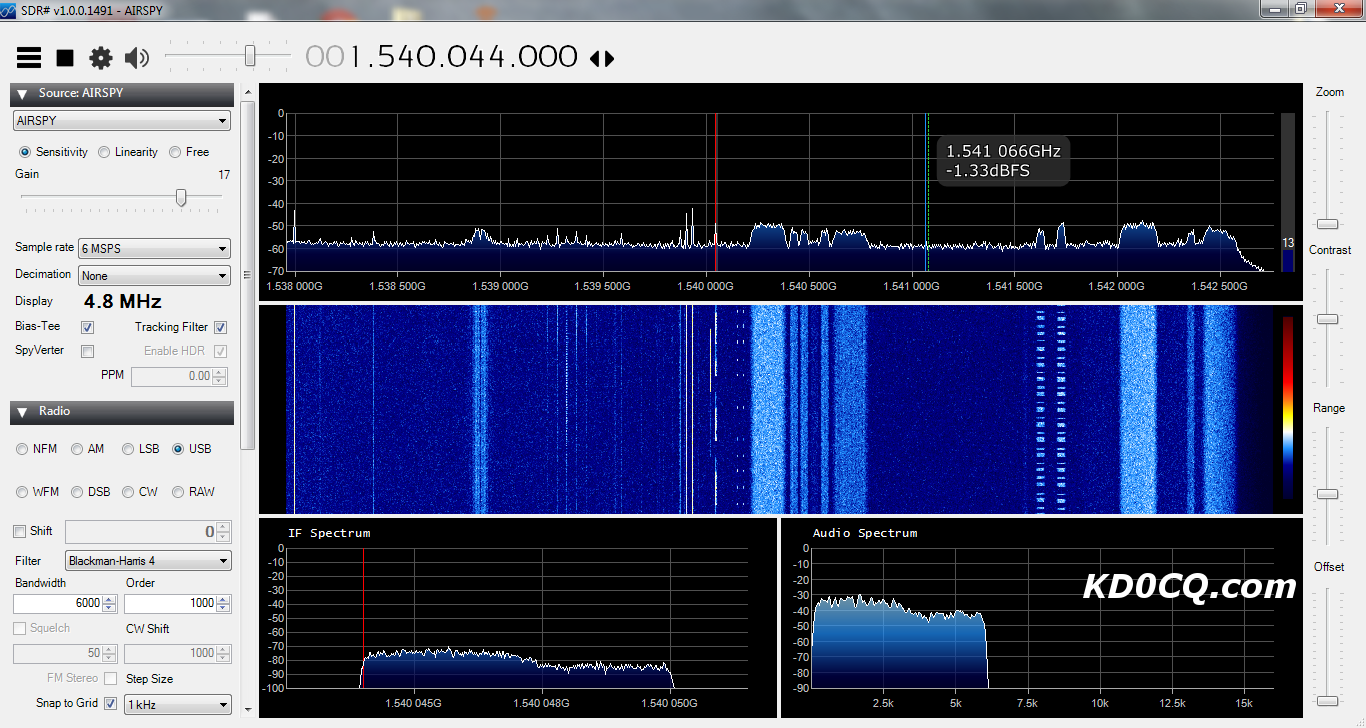
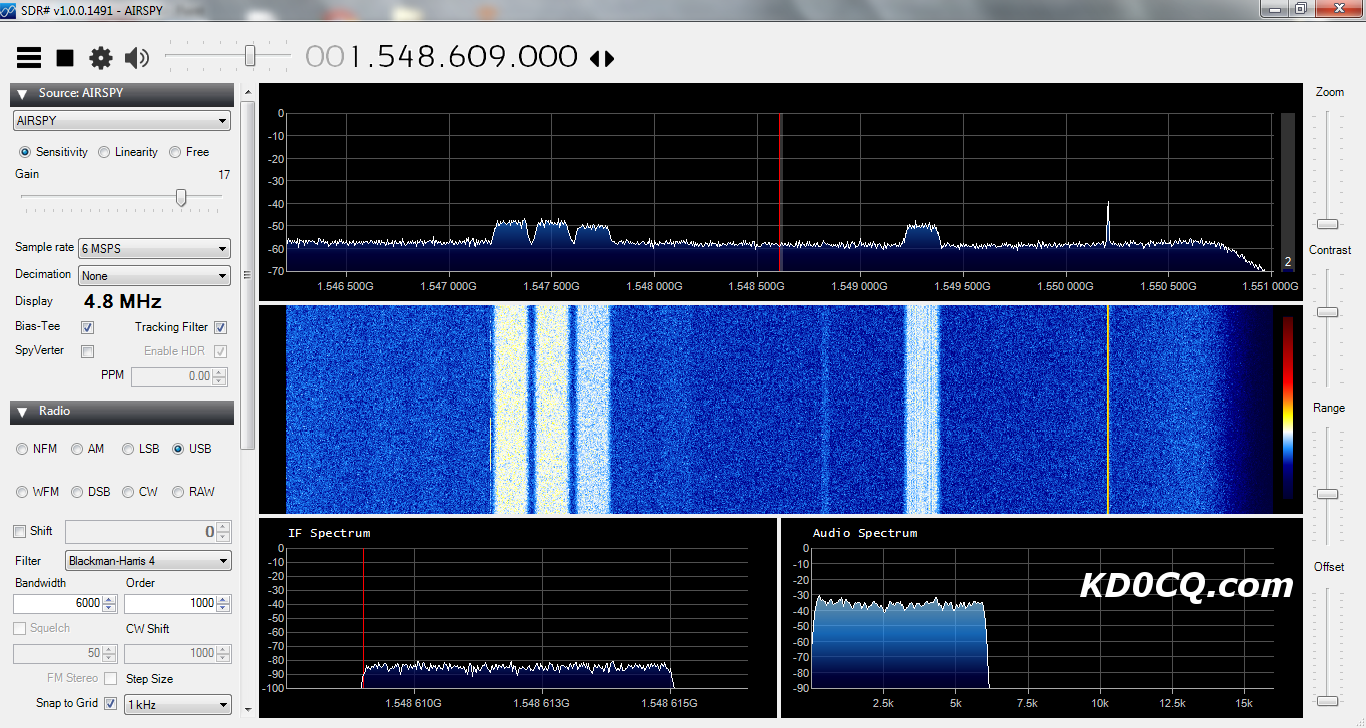
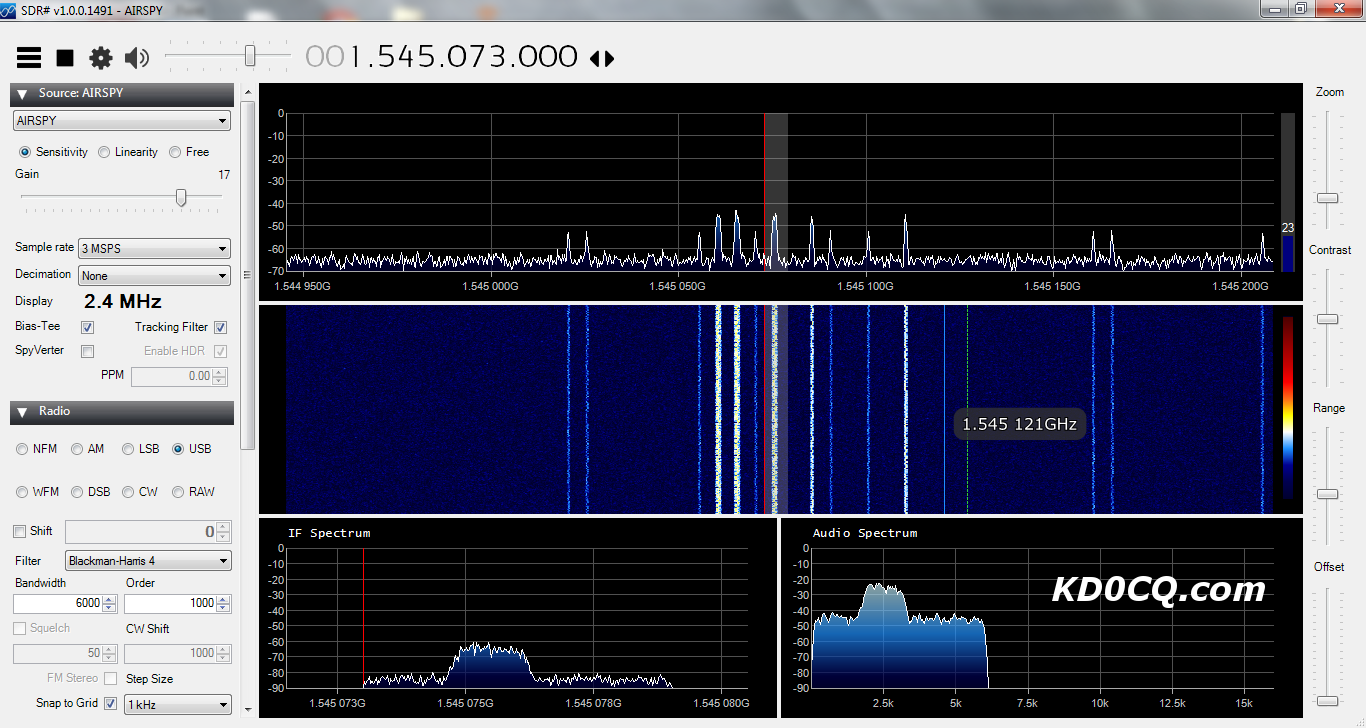
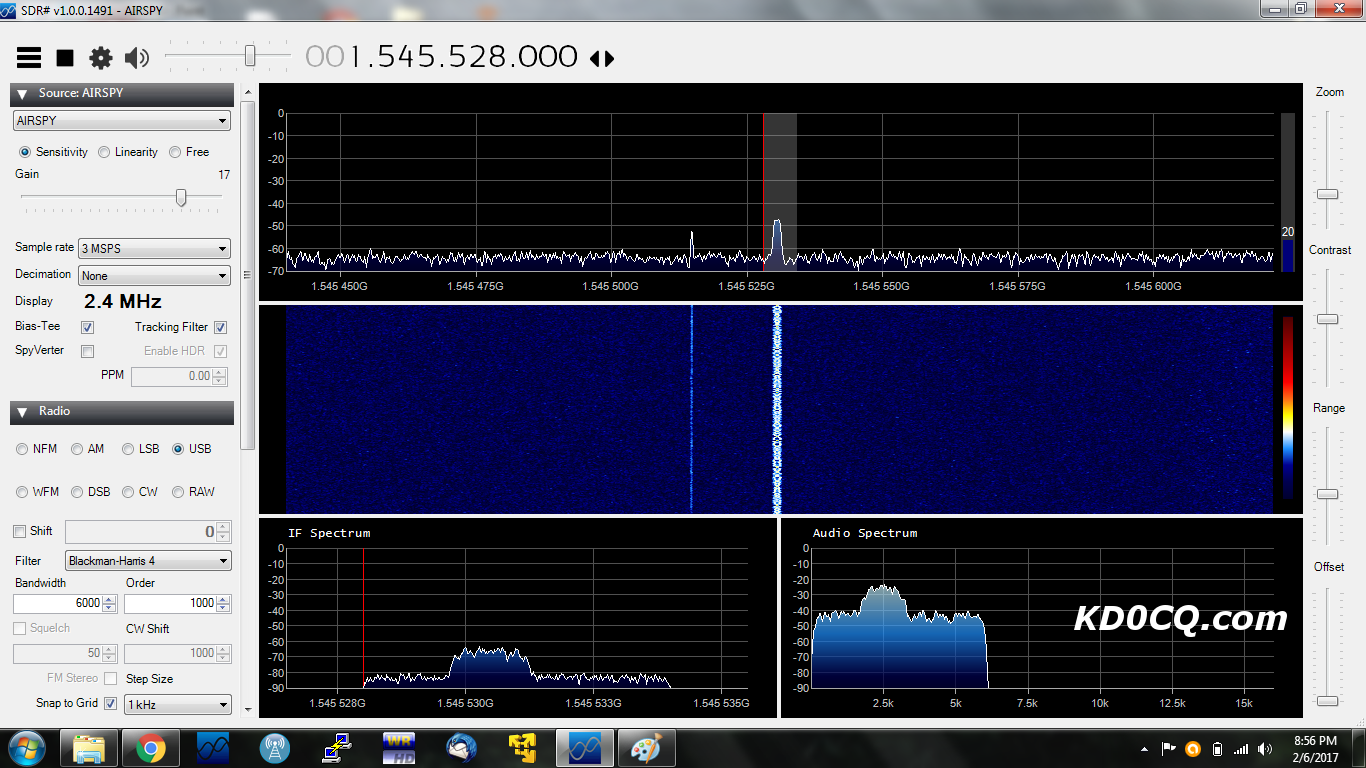
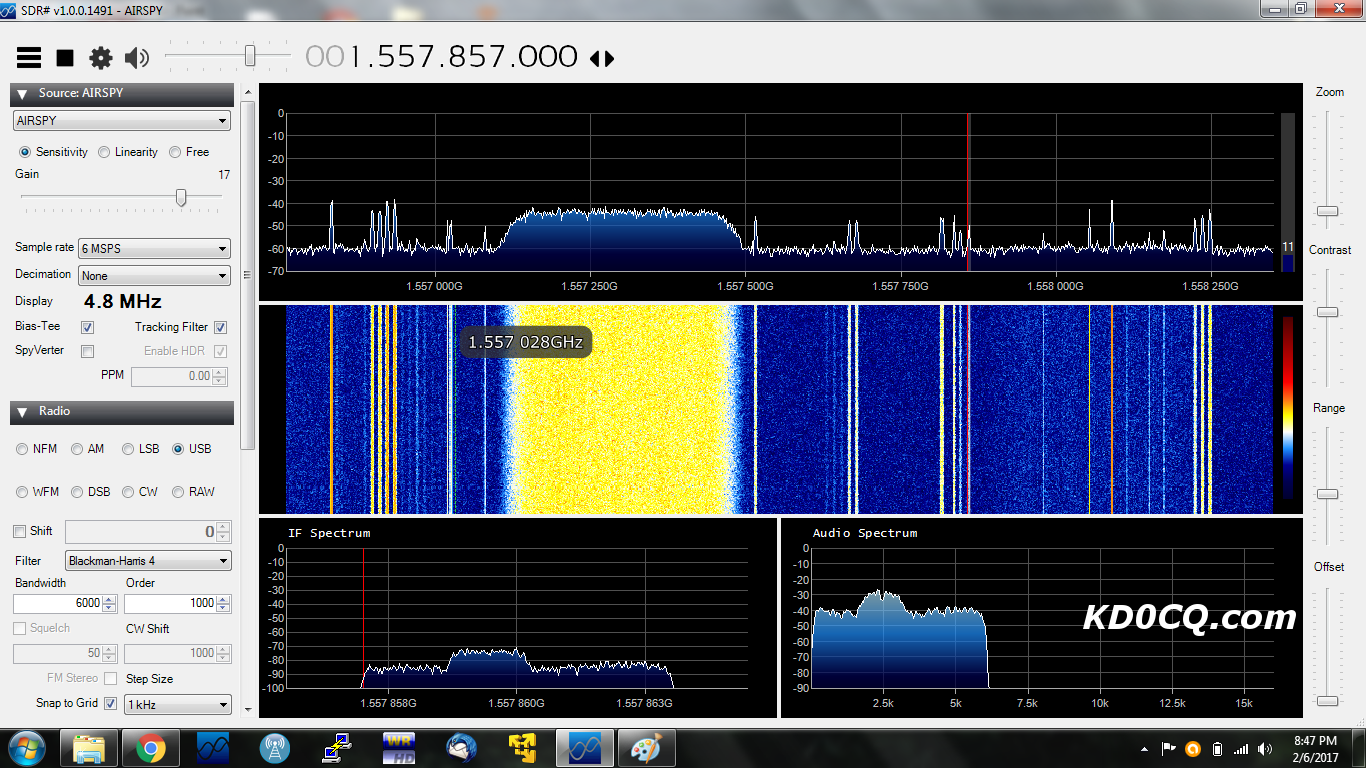
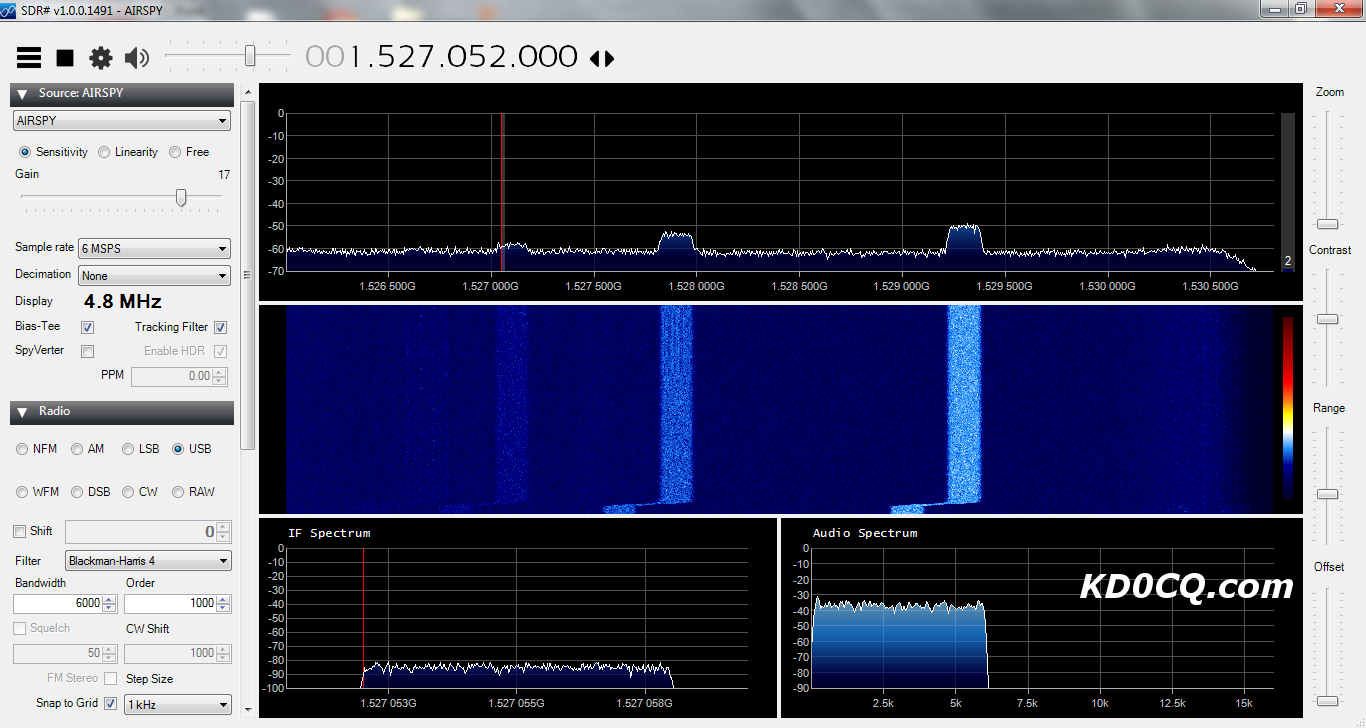
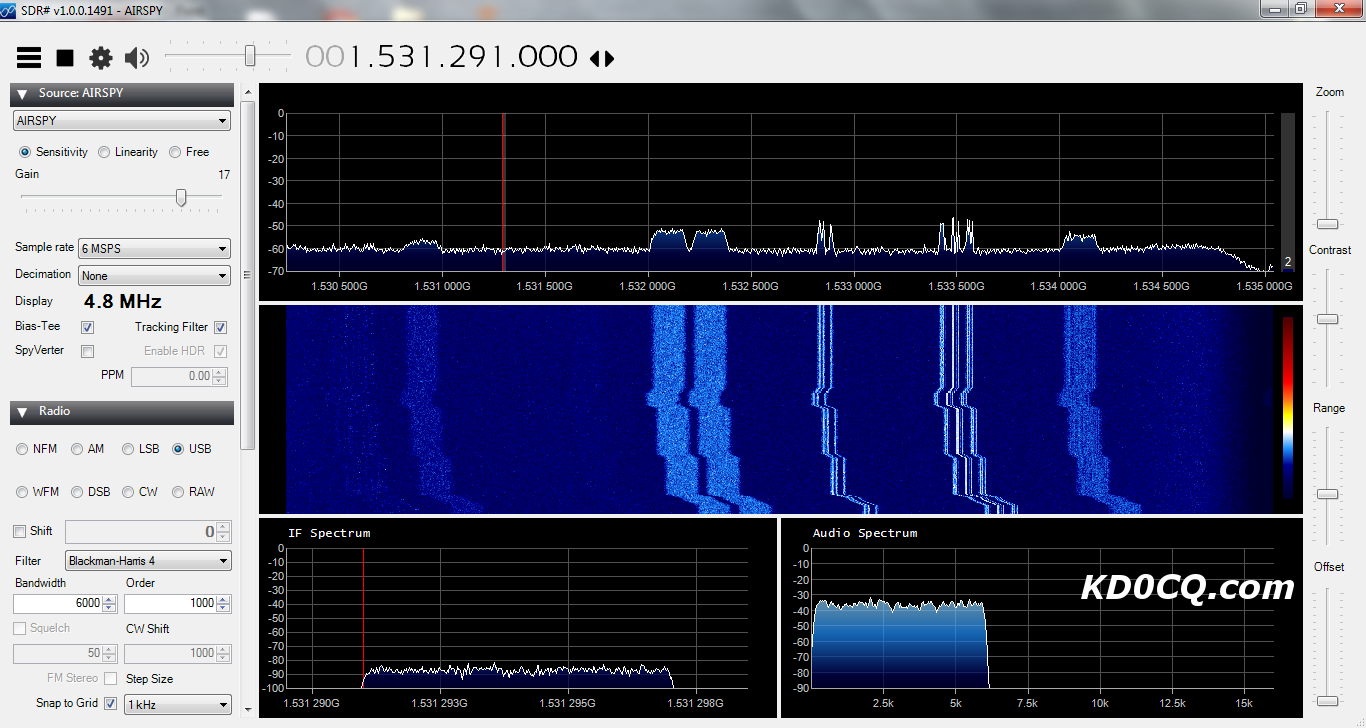
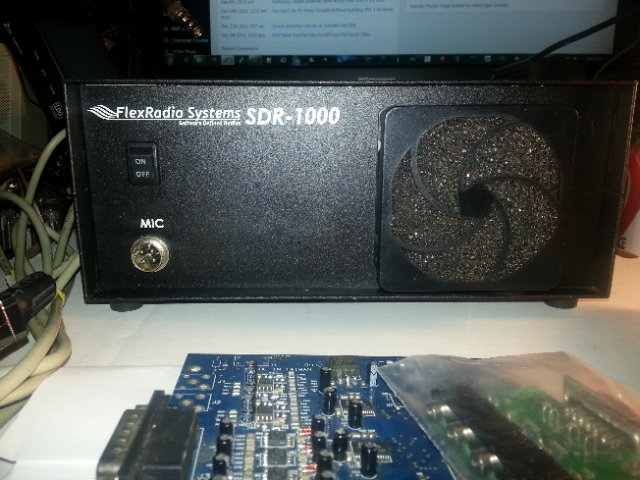
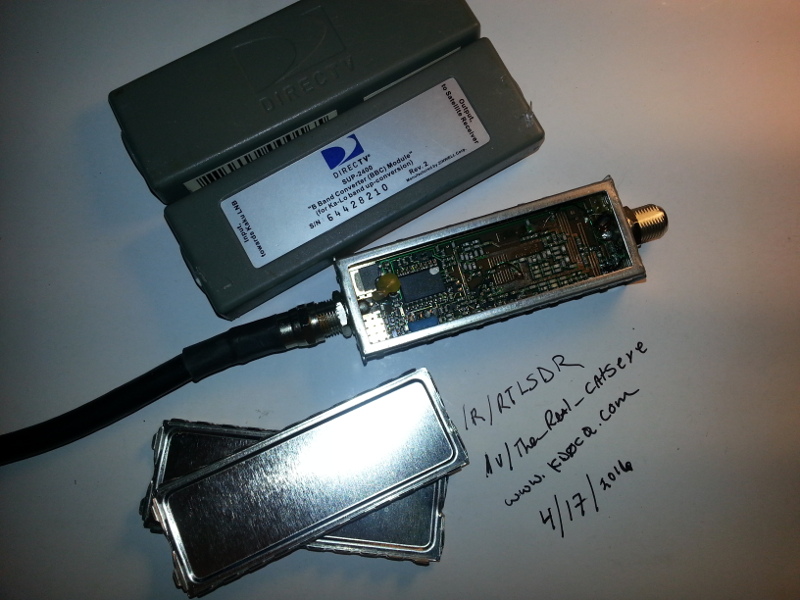
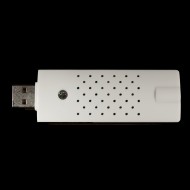
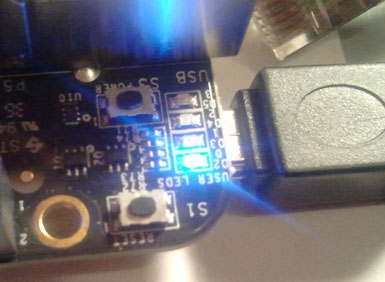
Dear KD0CQ,
I am VU2UUU from India. I have recently homebrewed a 1.5 GHz Helical Antenna and fixed with a Dish Antenna. I do not have a LNA. I use SDR# software but unable to see any signals in the 1.5 GHz spectrum. Can you share with me the frequency where I can see such L-Band signals and from which Satellites?
Also please help me with information which will be useful for such setup.
Hope to hear soon from you.
Best 73.
VU2UUU.
Kaustav Saha
INDIA